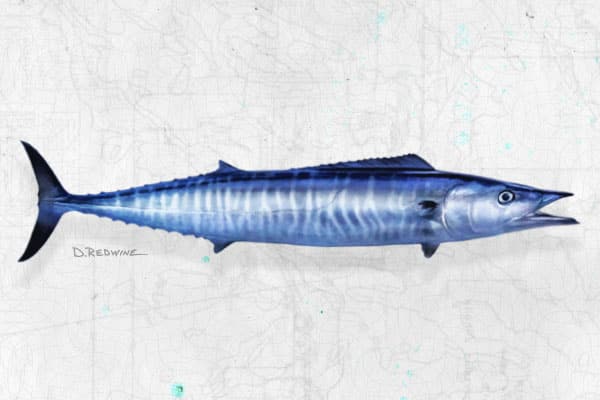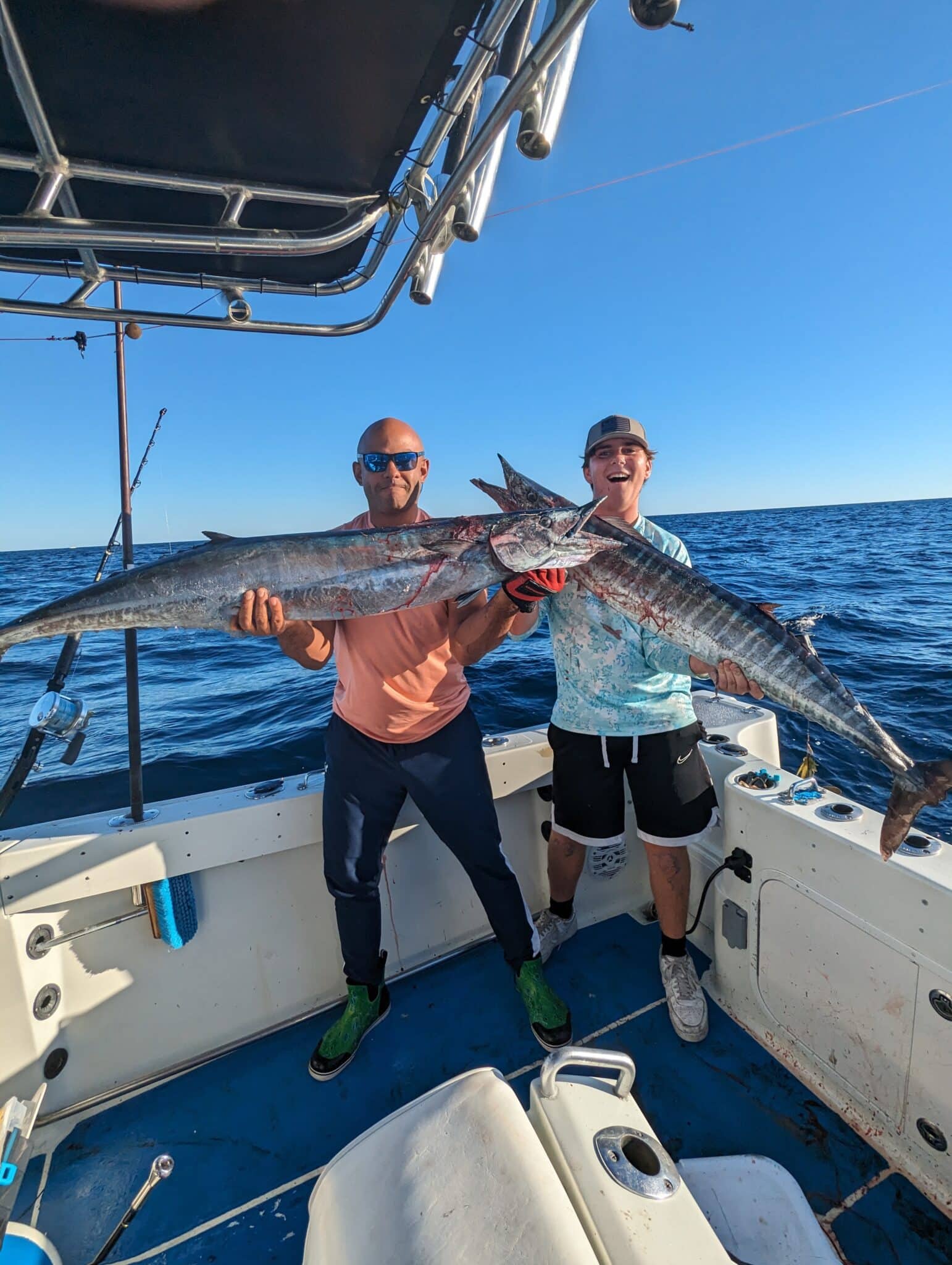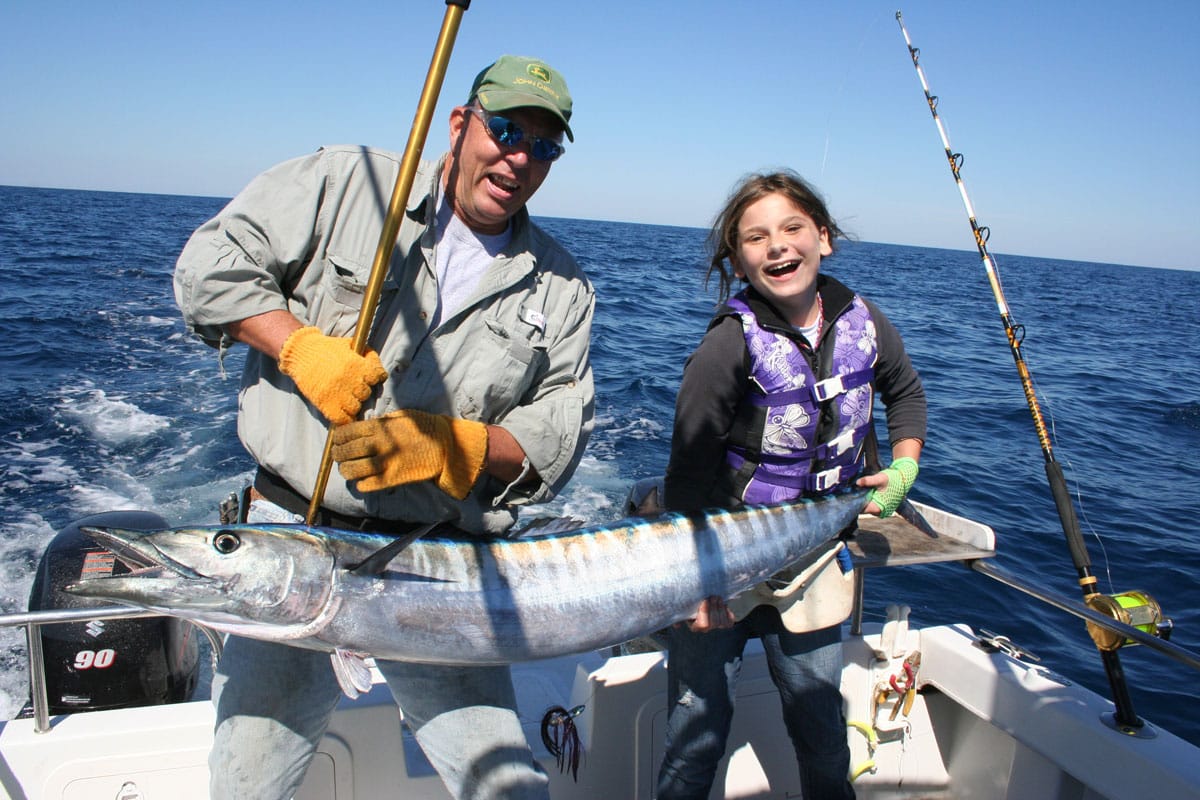Description
A member of the mackerel family, wahoo have long, streamlined bodies with wavy bars or stripes that fade quickly upon death. The wahoo is a top predator that chops its prey with its small, razor-sharp teeth. Highly prized by fishermen around the world as a sport fish and for its white, mild meat. Wahoo are quick and agile, reaching weights up to 150 pounds.
Ideal Conditions for Wahoo
SatFish maps show you where to find ideal conditions for Wahoo:
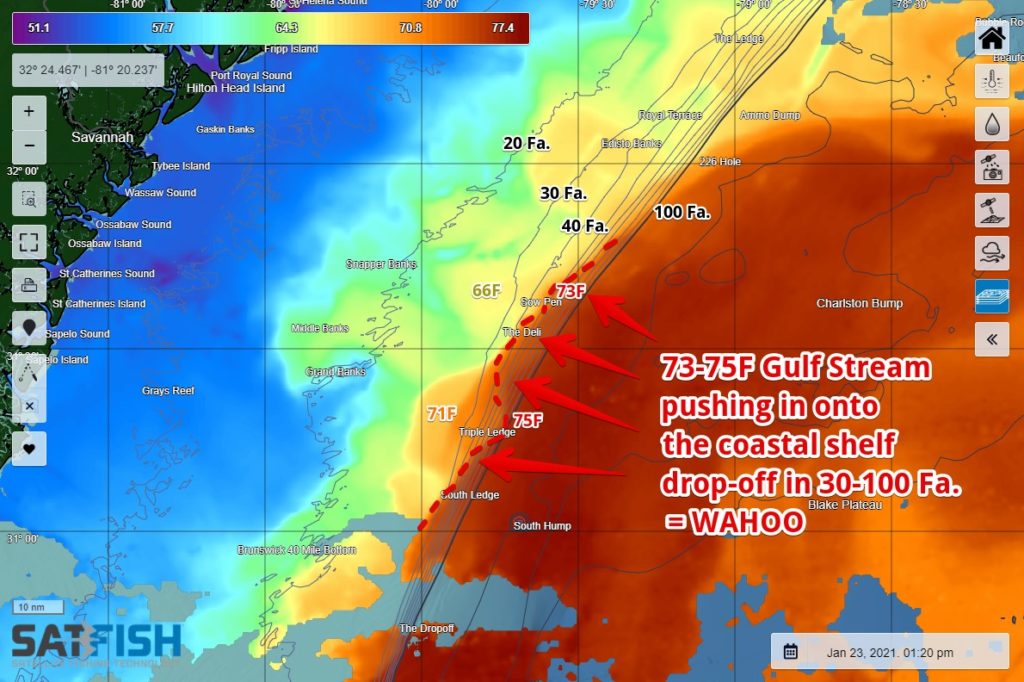
- Sea Surface Temperature:
68–82°F / 20–28°C (Ideal range: 73–78°F / 22–25.5°C) - Water Color / Chlorophyll:
Clean blue to deep blue-green, Chlorophyll range: 0.05–0.3 mg/m³ - Bathymetry:
Wahoo are typically found offshore in 120–600 feet of water, holding around drop-offs, seamounts, and steep structure where bait concentrates. They’re most active along shelf edges and current zones, but can move inshore when warm blue water pushes closer.
Wahoo are warm-water predators that prefer temps in the 73 to 78°F range and are most active when conditions hit that sweet spot, although they are also regularly caught in waters down to 68°F where they overwinter in Florida and the Gulf of Mexico. They like to cruise along the top and edges of drop-offs in 20-100 fathoms, especially along temp and color breaks where clean offshore water pushes in to the coastal shelf and canyon edges. They can also be found around offshore oil platforms and floating structure like kelp paddies, Sargassum weed lines, logs, and fish aggregation devices (FADs). If you’re tracking warm blue water and fast-moving current lines, you’re in the right zone for a shot at these razor-toothed speedsters.
Wahoo Migration Patterns
Wahoo follow seasonal patterns influenced by ocean temperature, prey availability, and current systems. In the Western Atlantic, wahoo are commonly found from spring through fall in the Gulf of Mexico, off Florida, and throughout the Caribbean. Their presence often aligns with warm water currents like the Gulf Stream, which push northward along the U.S. East Coast during summer months.
The Gulf of Mexico serves as an important habitat for wahoo, offering abundant forage and ideal water temperatures. Off Baja California, wahoo are most abundant from late spring through early fall, coinciding with the warming waters and increased bait activity.
In the eastern Pacific, wahoo can be found year-round in tropical waters, but their numbers peak during the warmer months when spawning and feeding conditions are optimal. The Sea of Cortez is a prime wahoo hotspot, providing warm, clear water and plentiful prey that supports healthy populations.
SatFish Regions where Wahoo can be found:
- Baja Pacific All Regions
- Baja Los Cabos
- Baja Cortez – Loreto/La Paz
- Mexico Puerto Vallarta
- Hawaii (all regions)
- Gulf of Mexico
- Florida (all regions)
- North Carolina
- South Carolina/Georgia
- Bahamas
- NE Canyons (occasionally)

How to Catch Wahoo
Wahoo are fast, aggressive pelagic predators typically found in warm, clear offshore waters along current edges, temperature breaks, and steep underwater structure. Unlike schooling species like mahi, wahoo often travel solo or in small groups, especially when feeding. They’re known for explosive strikes, blistering speed (up to 60 mph), and a knack for ambushing prey along drop-offs and bait-rich zones. When clean blue water and bait converge around structure, it’s prime time to target wahoo.
Here are proven tactics to help you find and catch Wahoo:
High-Speed Trolling
This is the go-to method for wahoo. Troll at 12–18 knots with deep-diving plugs like Nomad DTX Minnows, Yo-Zuris, Rapala Magnums, or skirted bullets rigged with single-strand wire. Run baits short and tight to the wake to keep them tracking well at speed. Focus your passes along temperature breaks, steep ledges, and current rips—especially where bathymetry lines stack close together on SatFish charts.
Mid-Speed Trolling with Planers
When fish are holding deeper, use planers or trolling weights to run baits 20–60 feet down. Troll at 6–9 knots with rigged ballyhoo, bonita strips, or weighted artificials. This method is especially effective near structure like seamounts, drop-offs, and the edges of offshore banks.
Shelf Edges & Seamounts
Wahoo often hold just off the edge of structure where baitfish get funneled by current. Use SatFish bathymetry layers to locate sharp contour changes—target the up-current side of seamounts, the outer edge of the continental shelf, and any high spot that lines up with temperature breaks or chlorophyll transitions.
Surface Signs & Bait Activity
Wahoo don’t always show themselves on top, but diving birds, flying fish flushes, or surface bait activity can signal fish nearby. Troll just outside or below this activity—wahoo often strike deeper than mahi or tuna in the same zone.
Wire Leaders Required
With razor-sharp teeth and a reputation for cutting mono on impact, wahoo demand wire. Use 60–90 lb single-strand wire or coated cable for trolling lures and rigged baits. Even short wire traces (6–12 inches) can save your gear.
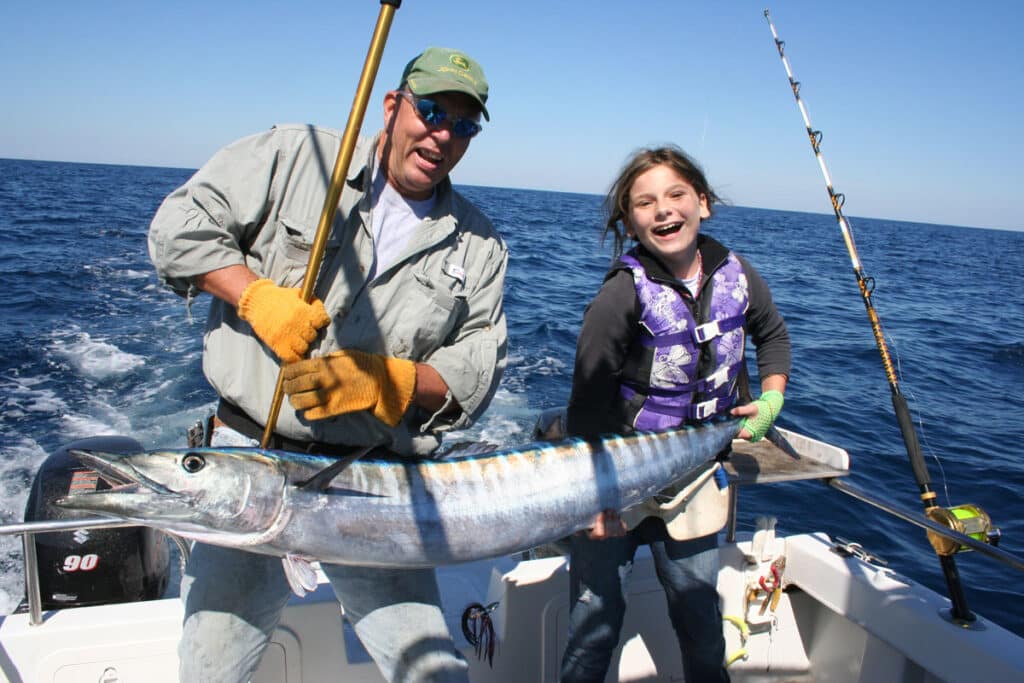
From Our Blog
Resources & Further Reading
NOAA Fisheries – Wahoo

